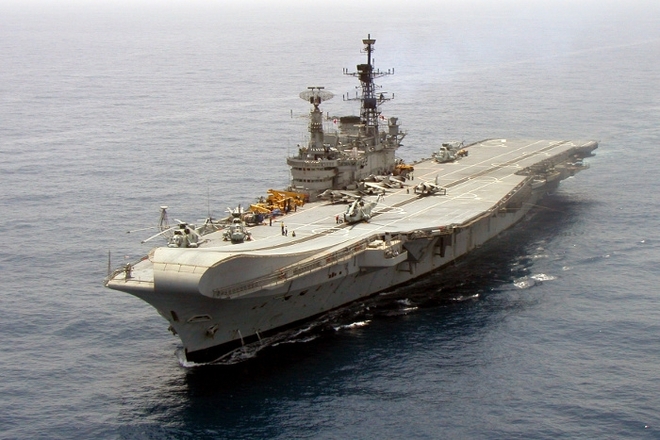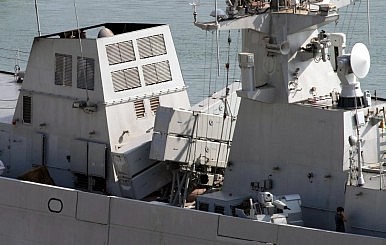The thought of submarine chases off the Swedish coast may sound a tad dramatic, the stuff of cold warrior fantasies. But after
two rumored sightings of Russian submarines in the country’s Scandinavian waters this fall, those fantasies have become all too real.
Swedish Armed Forces were
tipped off to the presence of the first submarine on October 17, but
called off their search a week later after failing to find enough evidence — it had already snuck away. On October 31, they began searching for a second foreign submarine, but only this month has conclusive evidence surfaced: On May 15, five independent witnesses came forward to say that they spotted a submarine very close to Stockholm on October 31 last year. That dramatically raises the stakes in Sweden’s hunt for aquatic intruders.
The witnesses — local residents with marine experience — described their sightings to the Swedish daily Dagens Nyheter. Their reports of a submarine sighting on October 31, near the suburb of Lidingö and thus much closer to Stockholm than the October 17 submarine, contradict the armed forces, who maintain that the object was a white plastic boat.
Sverker Göranson, supreme commander of the Swedish armed forces, now finds himself in a predicament. He can maintain the armed forces line that the witnesses are mistaken, or he can choose to believe the witnesses, which would raise the question of why the submarine was able to get so close to Stockholm. The Russian media, meanwhile, is already poking fun at what it labels Swedish military incompetence.
“It’s almost impossible to keep mini-submarines out,” notes Tomas Ries, a lecturer in strategy and security policy at the Swedish Defense College. “That would require rebuilding the whole coastal defense system that the armed forces decimated after the 1990s, especially sensor lines and helicopters.” Russian nuclear submarines are usually tailed by the US Navy, and vice versa, while smaller subs are not.
At the end of the Cold War, Swedish submarine hunters commanded an arsenal featuring depth charges, torpedoes, and anti-submarine-warfare grenades, and surface submarine hunters were aided by a large number of helicopters, which easily spot movements in the water. Now, however, “we’ve got rid of our more modern weapons,” says Göran Frisk, a naval commander and top submarine hunter until his retirement 12 years ago. “The Russians can do whatever they like in Swedish waters as long as they’re not careless, because in that case a Swedish warship can shoot and disable them.”
Following a series of budget cuts starting the late 1990s, the naval commandos defending Sweden’s 2,700-kilometer coastline find themselves rather modestly equipped in the fight against underwater intruders, with just seven torpedo-armed corvettes (small warships), four submarines and one marine battalion. In March, the government
announced an ambitious naval investment program that includes the purchase of two new submarines and the upgrade of existing corvettes. But that process will take years.
“Today we’re naked,” says retired Admiral Nils-Ove Jansson, a top submarine hunter in Swedish antisubmarine operations during the 1980s and 1990s. “The little equipment we have is good, but otherwise the situation is dreadful. The risks involved with intruding into Swedish waters are so negligible that the biggest risk facing a sub is that it has an accident.”
That is what happened to the Soviet Whiskey-class submarine U-137, which ran aground close to a Swedish naval base in 1981, an incident known as Whiskey on the Rocks. On October 27 that year, local fishermen discovered the submarine, stuck on a rock, and raised the alarm. The sailors, on an espionage mission off the Swedish coast, had misjudged its tricky waters. Though they all survived the accident, it led to a high-stakes diplomatic drama that ended when the Swedish navy escorted the submarine out of Swedish water 10 days later. After that scare Sweden hastily beefed up its submarine-hunting abilities, increasing both equipment and crew training.
And while Sweden’s navy boasts several modern ships and submarines, its sailors haven’t had much submarine-hunting practice since the 1990s. Finding an intruding submarine is harder than it sounds off the Swedish coast, whose archipelagos offer intruders countless hiding places. Philip Simon, a spokesman for the armed forces, is certain, however, that unwelcome guests will be caught. “We can discover an intruding submarine and get it to stop its activity,” he says. “The armed forces have no intention of disabling an intruder but want him to give up his unlawful activity.”
Not unexpectedly, the armed forces maintain that their navy is well-equipped for submarine hunts. “Regarding systems and their abilities, we’re well-equipped, probably the best in the world when it comes to advanced submarine-hunting in shallow waters,” says Simon. “We have weapons and systems to detect and fight intruding submarines both inside and outside our archipelagos.” But, adds Simon, reductions in the number of systems and vessels have had an effect on the navy’s ability to hunt for submarines in a larger area or over a longer period of time.
“The vast majority of security researchers believe that the intrusions are Russian under-water activities,” notes Ries. Following the collapse of the Soviet Union, the number of submarine intrusions in Swedish waters dropped, but started growing again in 2000. Independent naval experts
report that the Russian navy uses mini-submarines in the Baltic to
spy on Swedish, Finnish and NATO activities. It’s no secret that the Russian signals-intelligence ship Fyodor Golovin also
gathers information in the Baltic Sea, and doing so in international waters is not illegal. Russia’s military attaché in Stockholm, Colonel Vladimir Ermachkov, did not respond to a request for comment. Following massive military cuts in the 1990s, Russia is now half-way through a $700 billion
modernization plan.
Jansson, who’s also a former deputy director of the Swedish military intelligence agency, MUST, and a leading authority on Russian military espionage, argues that the Soviet Union’s snooping on its largest Scandinavian neighbor has returned in Russian guise, with an undeniable logic to it. “The Russians suspect that Sweden and Finland are not really independent of NATO,” he explains. “With their submarine activities, they’re preparing to put nuclear mines in Swedish locations likely to host NATO naval units. And their TU-22M supersonic bomber airplanes that fly towards Swedish airspace are testing the course of their missiles, which they’d direct against locations that may host NATO air force units.”
The Russian assumption is, of course, right on target: Though officially non-aligned, Sweden cooperates closely with NATO. A Russian air incursion on May 21 is reported to have
targeted a state-of-the-art southern Swedish airbase recently used by the Nordic Battle Group, which includes several NATO members. Until reinforcements arrive, the Swedish navy will have no choice but to keep vigilantly patrolling its waters, hoping that unwelcome guests will do themselves in.
Elisabeth Braw is a correspondent for Newsweek, which she joined following a fellowship at the University of Oxford.
* Article
publicat a Politico.eu . No és el primer cop que surten notícies assenyalant la debilitat de la defensa de Suècia. Com veiem altra vegada, el buit estratègic acostuma a omplir-se.
















